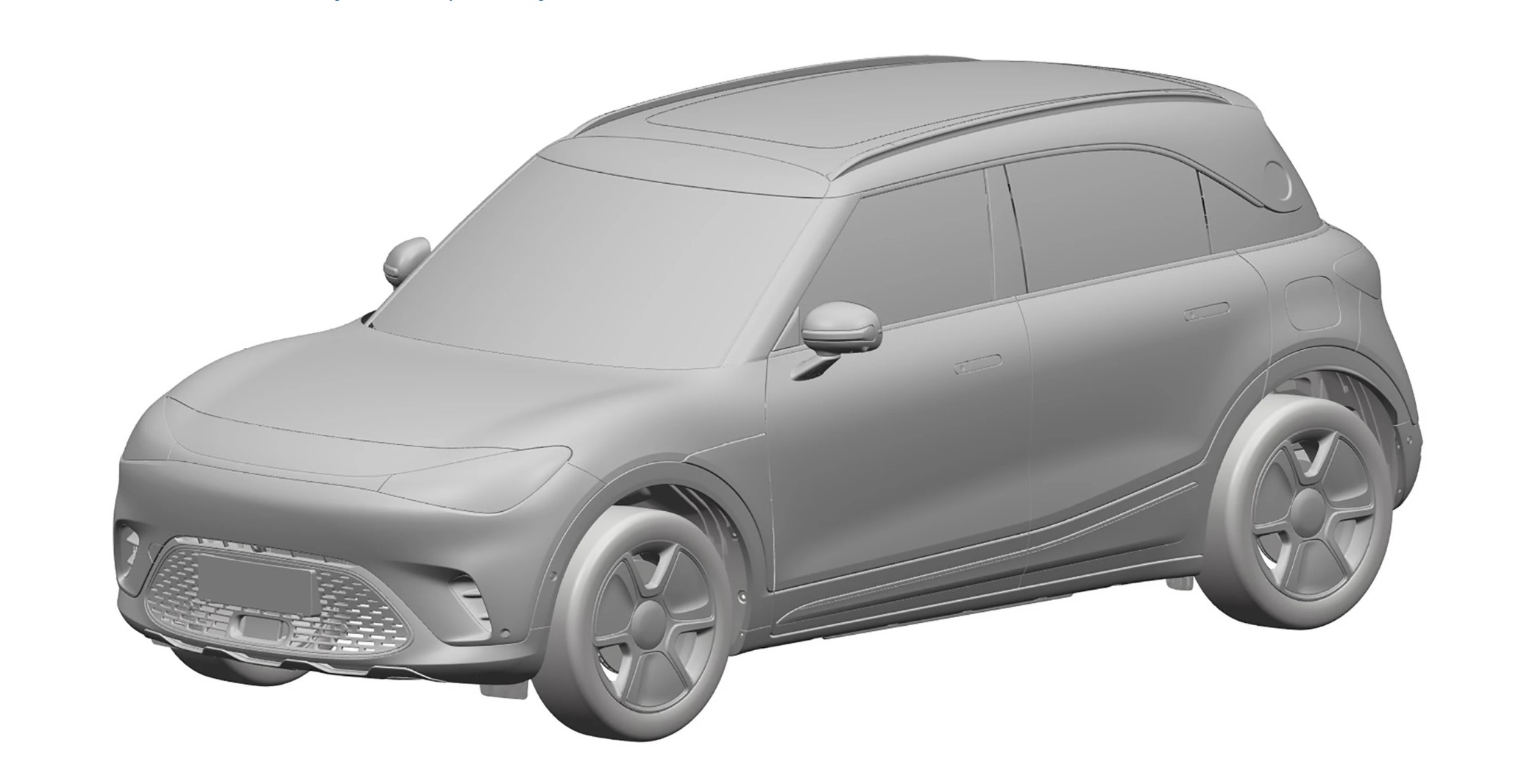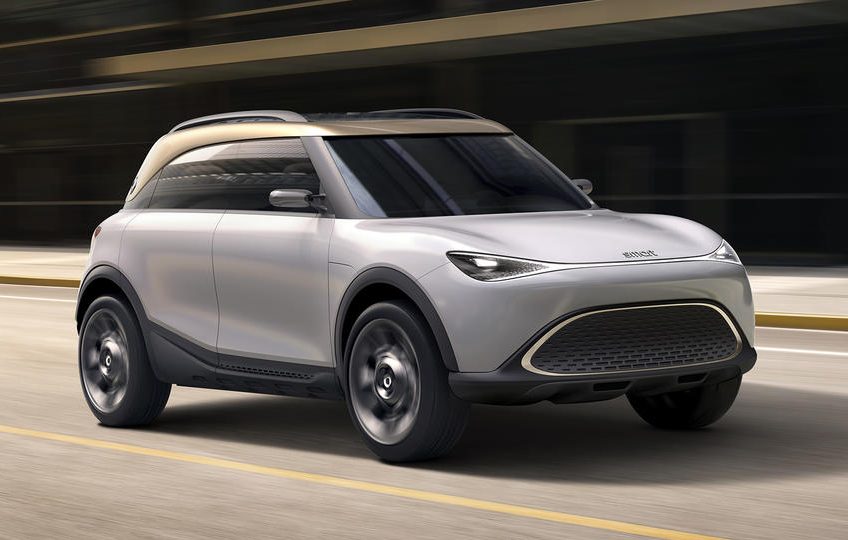Our first look at the small Smart SUV reveals a production model very closely aligned with the Munich show concept.
This is our first look at the production version of Smart’s upcoming all-electric SUV, tasked with rebooting the brand under joint Daimler and Geely ownership.
Previewed by the Concept #1 at the Munich Motor Show, a name for the car is still missing, but what looks like patent drawings for the design of the SUV have been filed with the European Intellectual Property office.
The images reveal a mild evolution away from the design established by the concept car, with changes including the incorporation of a proper bonnet, a new look lower grille section and smaller, road-ready wheels. The surfacing and the proportions of the vehicle closely align with the concept though, but that shouldn’t be surprising.
When it was unveiled in Munich earlier this year, Smart said that the Concept #1 revealed “a clear insight into the first production model in Smart’s new generation of all-electric vehicles” – and it demonstrates that the company is going to move away from its tiny city-car offerings.
Concept #1 is 4290mm long and 1,698mm tall – so slightly longer than a VW Golf overall, with a roofline that sits more than 10cm higher than the current Nissan Juke’s. The wheelbase is 2750mm, though, which is more than 10cm longer than that car’s larger SUV stablemate, the Qashqai. Smart is clearly hoping that the production model will have enough space to perform as an all-electric family SUV. As such, while the concept is a four-seater, the company says the final car – which is tipped to make its debut before the end of next year – will accommodate five people.
Geely is leading the car’s technical development, and while Smart has not confirmed a choice of architecture, it’s all but certain to use SEA – a new all-electric platform that’ll also underpin Chinese-market models, as well as a forthcoming baby Volvo.
Daimler, meanwhile, is responsible for the car’s interior and exterior styling. The firm’s Chief Design Officer, Gorden Wagener, said, “The Concept #1 is a redefinition of the Smart brand in a very cool, grown-up way. We’ve created a completely new design DNA that has the potential to establish Smart as the leading design brand.”
Concept #1’s overall look is far removed from that of any previous Smarts – a sign of how the firm is being relaunched from the ground up. The overall profile has short front and rear overhangs – typical of an EV on a bespoke platform – while frameless doors and blacked-out A-pillars achieve a ‘floating roof’ effect.
Other concept features include 21-inch alloy wheels, LED headlights and tail-lights, and no visible door handles. Smart says the doors – including rear-hinged back doors – are concealed and only revealed by “light elements”. The car’s front grille is divided into small triangles which can be individually illuminated; this is part of a ‘light show’ that the car can perform in time with musical rhythm.
Inside, there’s a floating central console that offers at least the possibility of flat-floor storage between the front seats, and a central 12.8-inch touchscreen infotainment system. Smart says the car has a central computer that controls four main areas of the car’s systems: infotainment, driver assistance, electromobility and the electric/electronic vehicle architecture. The firm claims that 75 per cent of the car’s processors can be updated remotely via over-the-air updates.
Smart has not issued technical information but the SEA is said to support battery sizes of between 58kWh and 100kWh, and the SUV is likely to have around 70kWh of capacity. While the platform can also accommodate dual-motor set-ups producing more than 370kW, the Smart is more likely to have a single motor – most likely at the rear, to help deliver a typically tight turning circle – with around 190kW. A four-wheel-drive version is perfectly conceivable, too.
Codenamed HX11, the SUV is expected to be manufactured – alongside electric successors to the Smart Fortwo and Forfour – at a new joint-venture factory in Xi’an, China, with a capacity of 300,000 cars per year.
James Brodie






